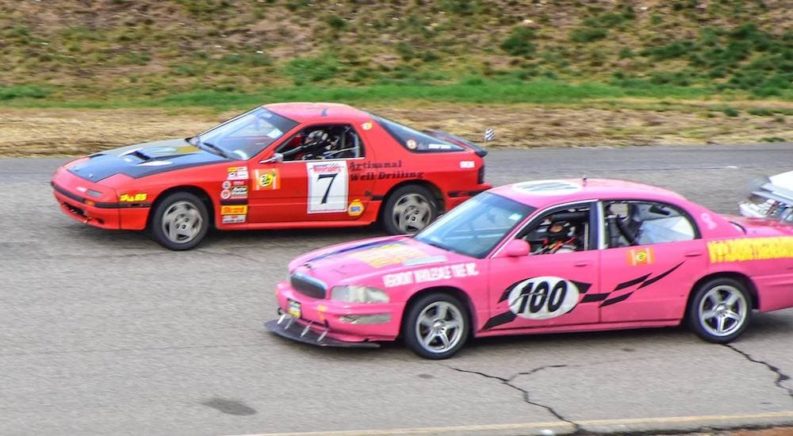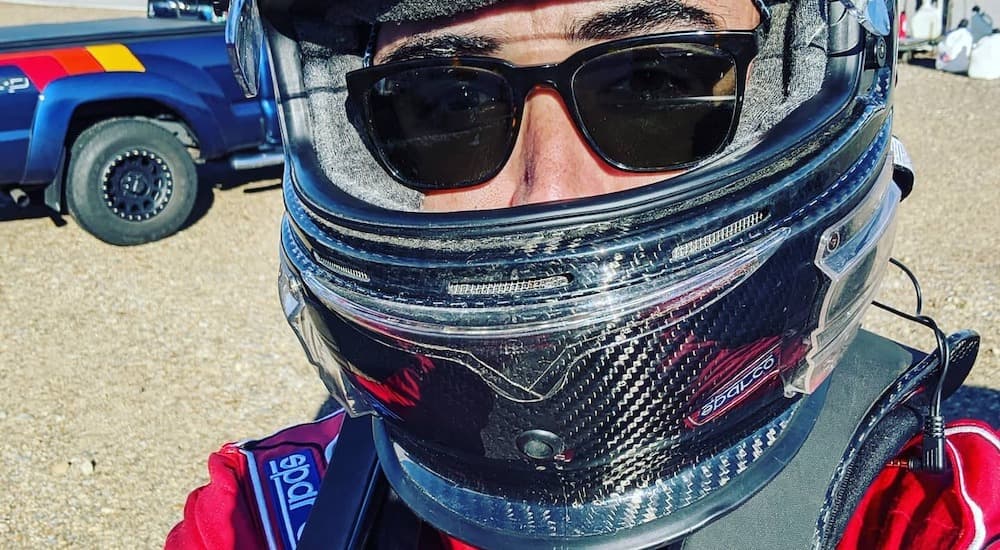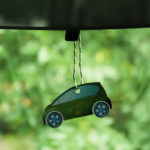If you have the slightest interest in cars (and even if you don’t), then you probably know all about the major racing series – NASCAR, Formula 1, and World Rally Championship. However, like most sports, those headline-grabbing events are only the tip of the iceberg. Underneath is the wide world of amateur racing. Across America, there are countless amateur racing organizations where enthusiasts just like you are pushing their cars and themselves to the limits.
If you have dreams of being a race car driver (and let’s admit it, you probably do), then amateur racing can make those dreams a reality. Yes, your first events will likely be less glamorous than you might have been imagining, probably finding you driving around cones in and out of the way in a parking lot, but amateur racing goes far beyond having fun at your local Autocross event. In fact, amateur racing is almost certainly where your professional racing icon got his start.
Call Me Dave
To get a better feel for just how deep amateur racing is, Car Life Nation tracked down Dave, a fifteen-year veteran of the amateur racing scene. Similar to many drivers in the sport, he got his start by showing up at an Autocross event with an Acura RSX without a clue as to what he was doing. Since then, he has built several dedicated race cars and competed in numerous events, recently returning from endurance racing at Virginia International Raceway.
In addition to his RSX (sadly totaled in a non-racing-related accident soon after he started), Dave has owned a 1991 Honda CRX Si (which blew its engine after his first race in it), a 1996 Mazda Miata setup for Autocross, a 1987 Mazda RX-7 built for hill climb, and is currently putting the finishing touches on a tube-chassis race car. He has also been a member on teams that raced a dilapidated 1988 Ford Mustang set up with right-hand drive and an engine from a Datsun 280Z, a different Mazda RX-7 that was eventually V6-swapped, and another early 1990s Mazda Miata that had been heavily upgraded (Dave has a thing for Mazdas if you haven’t noticed).
The list of events that he has participated in is just as long as the list of cars he has raced, notably including Hill Climb and 24 Hours of Lemons, in addition to Autocross (which he continues to enjoy to this day), Rallycross, and Champ Car. Such a varied career in amateur racing is uncommon but not unheard of, as there are countless disciplines of amateur racing, and plenty of enthusiasts enjoy experiencing as many of them as possible. In addition to giving Dave plenty of knowledge to share with us, his career gave him the same perspective as many of you – that of starting from a complete beginner who had no clue what he was getting into.
Getting Started
Taking the step from partaking in the occasional bout of spirited driving on the street to actually racing on a closed course in a sanctioned event can certainly be a daunting one – but it shouldn’t be. In fact, you can track down your nearest Autocross event today and dive right in as long as you have a car and a helmet (and many events will loan helmets) – the only rule about what sort of car you need is that it has to be wider than it is tall (to prevent rollovers) and in good mechanical condition. For more information on getting started, check out our deep dive into Autocross.
If you don’t have a sports car, don’t worry. While serious machines like Corvettes and Porsches are not uncommon in the amateur racing scene, they are not necessary to enjoy the sport. Dave even related one entertaining anecdote about finishing in the top third of an Autocross event while driving a Toyota Prius in the rain on the car’s original low rolling resistance tires. More realistically, he talked about a serious competitor who consistently finishes in the top five while driving a 1991 Honda Civic Si with nothing more than basic 200 treadwear tires.
In fact, Dave highly recommends against investing large amounts of money in a car until after you know you are serious about the sport. While you may think a high-quality modded car will make you better, he stresses that the driver’s skill is far more important. Too much equipment too early can lead to the creation of bad habits or even make your car too intimidating to drive it enough to get comfortable. He even recommends that you avoid putting racing slicks on your car until you know what you are doing, as the phenomenal level of grip they provide hides your mistakes.
Autocross may not live up to your dreams of racing at triple-digit speeds, overtaking competing cars, but don’t worry – it will give you the fundamental skills to get there. Dave constantly reiterated that Autocross is the perfect environment for novices and veterans alike to hone their skills and tune their cars to prepare for more serious events. Even after participating in more serious events with heavily modified cars, Dave continues to return to Autocross to practice.
Autocross will also make you a member of the racing community. In addition to letting you form friendships with people who are actually interested when you ramble on about cars, this can help you get advice on how to improve your driving skills and may open doors to more serious forms of racing. While he pointed out that the internet has made it easier to locate race events near you, every step in Dave’s racing career was helped along by the connections he made in the racing community.
So get out there, have fun, and meet people!
Getting Serious
But what lies after Autocross? Well, there is no easy answer because there are so many possibilities. This is the part of amateur racing that may be the most mysterious to the average car enthusiast. It’s a smaller scene, and it’s not widely known beyond the participants. In Dave’s case, what came next was Hill Climb. Like Autocross, Hill Climb is still not wheel-to-wheel racing (i.e. you are still racing for the best time and will not see other cars on the course), but it is far faster and more dangerous.
The best example of Hill Climb that you likely will have heard of is the Pikes Peak International Hill Climb out in Colorado. While that incredible event represents the pinnacle of Hill Climb, even local events will still see cars racing well over 100 mph up mountain service roads. Hill Climb is just one of the many options you have as you get deeper into amateur racing; it is a good example of a step up from Autocross.
One aspect to consider is that more serious types of racing will require more serious cars. This comes down to two reasons. First, you will likely want a car that is specialized for the type of racing you are doing – Dave pointed out that the changes he made to his Hill Climb RX-7 made it an excellent car for that discipline but awful for Autocross. Second, the higher level of risk in more serious racing means that you don’t want to drive anything you can’t afford to write off.
The higher level of risk also means that you will want to make safety modifications to your car, such as installing a roll cage to protect you in the event of a crash. While you can drive a caged car on the street, doing so is inconvenient and uncomfortable. In Dave’s case, he purchased a CRX Si that had previously been used in Hill Climb and then installed a full cage before taking it to his first event. That car cost $800, and the cage cost $2,400, making it a significant investment but not out of reach of the average person.
While Hill Climb might not be an event that interests you, there is a huge selection of different amateur racing events out there. As you dive into the scene, you will soon discover a discipline that catches your eye.
Getting Better
It turns out that getting started at amateur racing is easier than you might have expected, but don’t expect to find yourself on the podium in the first competition you enter. While natural drivers can do very well, racing requires different skills than driving on the street. Even during spirited backroad driving, you do not push your car to the limits in the way that you can on a closed course (at least you shouldn’t be, and you risk severe consequences if you do). Dave pointed out that just getting comfortable with the sound of screeching tires can be a mental block for new Autocross drivers since that noise usually portends an accident when heard on that street.
When you ramp things up to more serious disciplines, things become even more intense. When Dave got his first ride in a serious short-track race car, he found himself forgetting to breathe even though he had been Autocrossing for years by that point. Most people will never find the limits of a street car, and specialized race cars can push things to the point where physics seems to break. Becoming comfortable handling those sorts of stress requires practice.
Unfortunately, racing can quickly become an expensive hobby. Practice sessions cost virtually as much as actual competitions, and the serious events, like wheel-to-wheel road course racing, can easily run you over $1,000 dollars for a single weekend. This is part of the reason why even experienced drivers like Dave keep coming back to “entry-level” events like Autocross. While things may not be as intense in Autocross, it provides the opportunity for affordable seat time to build your skills and learn your car. If you do want formal training to hone your skills, Dave suggests looking for Autocross instruction or HPDE (High Performance Driver Education) events.
Other Ways to Improve
But if your budget is tight, what other opportunities can you take to become a better race car driver? First, you can practice your driving skills on the street. That doesn’t mean breaking the speed limit every time you go out for groceries – it means driving smoothly, apexing corners properly, and practicing skills like left foot braking. Second, you can review videos and data from your competitions. Most serious competitors today will have GoPros and data recorders in their cars, giving them a wealth of information to pour over and making it easier to find areas to improve. You can also watch videos from better drivers, seeing what they are doing differently.
Further, you can take advantage of simulators. Dave pointed out that the recent COVID shutdown woke people up to the incredible value of simulators, and he has been spending a lot of time practicing in iRacing. Modern racing simulators are far more than mere video games, with the best offering near-perfect recreations of real-world cars and tracks. Although even the best simulators will never give you the full racing experience, with a lack of G-forces, seat feeling, and sound, they will give you a good understanding of how a car handles and allow you to experiment with different ways of tackling a track.
Perhaps most importantly, get to know how your car works mechanically. The vast majority of amateur racers are their own mechanics, not only as a way to save money but so that they can better understand their vehicles. As you become more familiar with your car, you will be able to push it harder and tune it to better fit your needs. And, of course, being able to patch things up on your own can be crucial when something goes wrong during an event (and it will).
Racing Can Be More Than a Dream
While the amateur racing scene may seem mysterious or intimidating, it is far more accessible than you might have thought. Like most hobbies, amateur racing is filled with friendly enthusiasts such as Dave, who will welcome anyone with a good attitude. If you have ever had dreams of becoming a genuine race car driver, then it is time to make those dreams a reality. Track down a local event, and get ready to experience the enjoyment that comes with being able to push yourself and your car to the limit.







